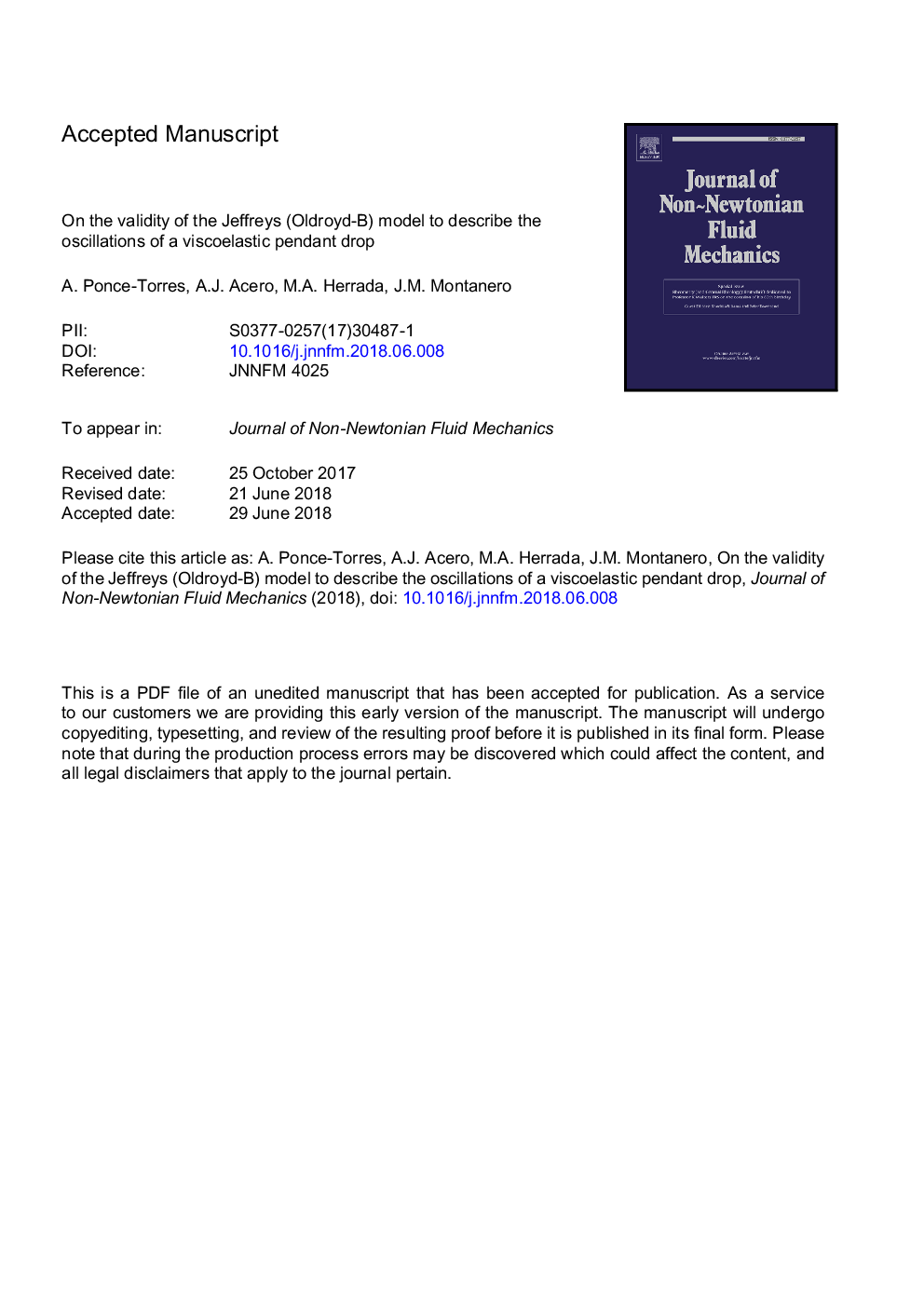| Article ID | Journal | Published Year | Pages | File Type |
|---|---|---|---|---|
| 7061039 | Journal of Non-Newtonian Fluid Mechanics | 2018 | 24 Pages |
Abstract
We study both theoretically and experimentally the forced and free oscillations of a viscoelastic pendant drop in the linear regime. The Jeffreys model is numerically solved using the zero-shear viscosity of the steady shear flow in a rotational rheometer, and the stress relaxation time measured with a filament stretching elongational rheometer. The damping factor characterizing the first oscillation mode is one order of magnitude larger than that measured in the experiments. Three possible conclusions can be drawn from this study: (i) the Jeffreys model severely underestimates the viscosity decrease due to elasticity; (ii) the zero-shear viscosity measured in the rotational rheometer is much larger than the effective viscosity responsible for energy dissipation in the pendant droplet oscillations; and (iii) the relaxation time measured with the filament stretching elongational rheometer is much smaller than that characterizing those oscillations. The failure of the Jeffreys model necessarily entails that of all nonlinear constitutive relationships which the Jeffreys model can be derived from, like the commonly used Oldroyd-B model.
Related Topics
Physical Sciences and Engineering
Chemical Engineering
Fluid Flow and Transfer Processes
Authors
A. Ponce-Torres, A.J. Acero, M.A. Herrada, J.M. Montanero,
